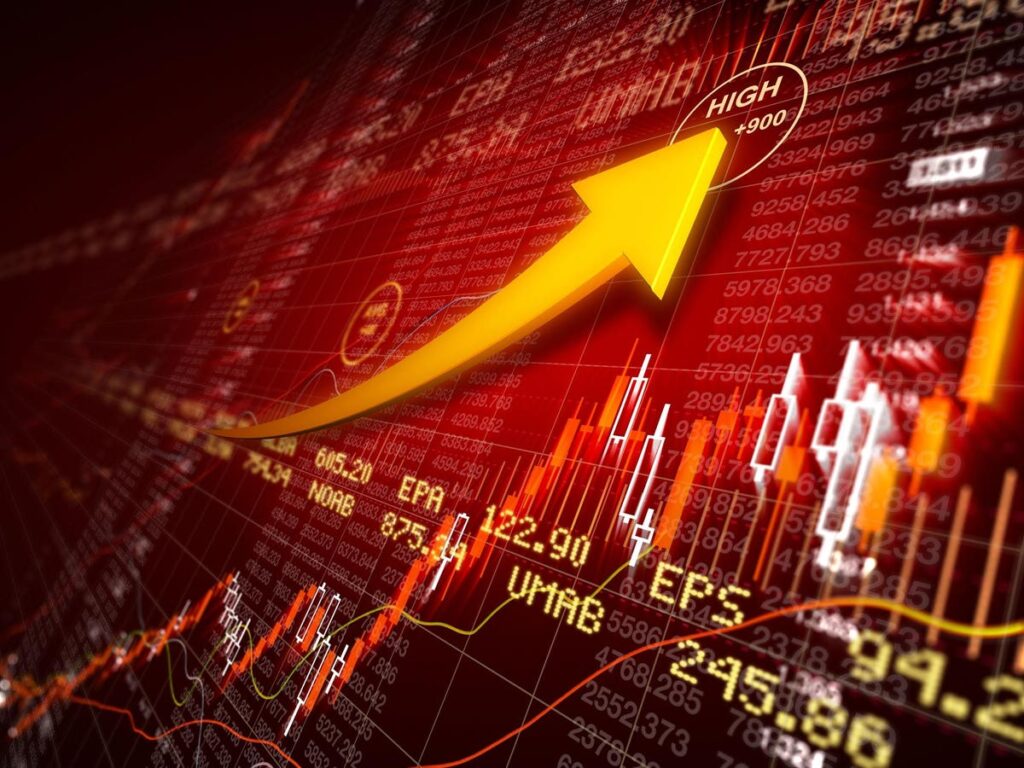A group of elite firms have transformed trading into a match of the best algorithms—often won by nano-seconds.
getty
The Financial Times recently published a fascinating series of long-reads titled “The New Titans of Wall Street,” which chronicles the rise of a small number of elite trading firms.
For over a century, investment banks like Goldman Sachs dominated Wall Street. Today, they are being eclipsed by high-frequency trading firms like Jane Street, Citadel Securities, DRW, and XTX Markets, which have transformed trading into a match of the best algorithms—often won by nanoseconds.
The numbers speak for themselves. Citadel Securities now handles a quarter of all U.S. stock trading, executing $455 billion in trades daily. Jane Street trades across more than 20 countries and managed $6.3 trillion in exchange-traded funds (ETFs) and options last year, with a notional value of $32 trillion. Jane Street paid an average of over $900,000 per employee last year, dwarfing Goldman Sachs’ $340,000.
These firms have redefined what it means to trade. No longer an art based on human experience and intuition, the ‘New Titans’ engage in a relentless pursuit of incremental efficiency based on mathematics and powered by physics. They have reshaped the very culture of Wall Street. Gone are the raucous trading pits, replaced by PhD- and engineer-led teams optimizing algorithms.
Their ascent has been helped by milestone shifts in regulation and technology. The 2005 Regulation National Market System (Reg NMS) accelerated the transition to electronic trading, while the Dodd-Frank Act of 2010 ultimately brought about the Volker Rule in 2015 that restricted banks’ proprietary trading.
As investment banks increasingly found their hands tied by compliance and capital requirements, high-frequency trading firms stepped into the gap, exploiting their agility and technological prowess to seize market share.
These privately held firms have scaled at the speed of light, unburdened by deposit-taking activities or extensive regulatory scrutiny. Citadel Securities’ assets have increased 12-fold since 2008, while Susquehanna International Group’s have grown sixfold.
As these firms consolidate power, the risks to market stability grow. While high-frequency trading delivers efficiencies, it has also fueled concerns about market volatility and opacity. Events like the 2010 “flash crash” and the Knight Capital “Knightmare” illustrate how even the most advanced technologies can expose systemic vulnerabilities within the trading ecosystem.
At the same time, it’s worth noting that during such crises, algorithmic systems have also been known to sustain a degree of stability to counteract the reactions and withdrawals of traditional traders. However, the potential for the New Titans to inadvertently increase systemic fragility is a valid concern.
Critics argue that regulators lack sufficient oversight of these firms, whose scale and influence now surpass that of traditional banks. As former Goldman Sachs president Gary Cohn put it, if one of these trading giants faltered, it would likely require a major bank to step in. Forget about ‘too big to fail.’ The New Titans of Wall Street are programmed to dominate and coded for control.
At the same time, the retail trading boom, driven by gamified platforms like Robinhood, has created a parallel set of challenges. While these apps have democratized market access, they have done so at the cost of transparency and investor education.
Practices like “payment for order flow” funnel profits to these same high-frequency trading firms, while retail investors bear the brunt of market risks. The “commission-free” trading illusion masks a deeper exploitation of user data and order flow.
Against this backdrop, it is critical to remember where trading came from, what ends it is meant to serve and to reimagine what trading might look like in the future. At its core, trading is about allocating capital efficiently and providing liquidity to markets — a process that should be as inclusive and equitable as possible.
The rise of algorithmic trading has sidelined human judgment, but at the end of the day, the buck always has to stop with someone. We will soon have algorithms making decisions that no person can be held accountable for, and then what?
Firms like XTX have over 25,000 GPUs [Nvidia graphics processing units] , but very few people make trading decisions. This indicates where they consider value to reside regarding trading markets. It’s about profit and not people, which is fair enough, but risks forgetting that markets are ultimately a means to human ends, and not ends in themselves.
At Select Vantage, we take a distinctly human approach to marketmaking. With over 2,500 skilled traders spanning 50 countries, we facilitate $4 billion in daily trades across global markets. By valuing human insight over automated algorithms, we create meaningful employment in emerging economies and bolster small-cap and growth-stage companies.
This approach demonstrates that profitability and purpose can thrive together, starkly contrasting the opaque, machine-driven systems dominating today’s financial landscape.
We aim to scale this model even further through our upcoming Real Trading platform. By creating thousands of additional jobs in some of the world’s fastest-growing economies, we will deliver critical liquidity to their stock markets while fostering economic opportunity and growth.
Regulators, too, have a role to play. Current oversight often lags behind the realities of high-frequency and algorithmic trading, focusing on banks while leaving non-bank players largely unchecked. This imbalance must be addressed. Transparency, equitable access to market data, and fair competition are essential to ensure that markets remain robust and inclusive.
The future of trading stands at a crossroads. The rise of high-frequency trading giants has brought unprecedented scale and efficiency but also concentration and volatility. Left unchecked, the consolidation of power in a handful of firms risks undermining the broader market’s integrity and resilience.
We must resist the narrative that faster and more automated is inherently better. True progress lies in embracing the human element of trading — leveraging technology to enhance, rather than replace, human judgment.
The choice is ours to make. Let’s ensure that the future of trading remains as competitive, diverse, and human as the world it serves.


